Conducting the Energy Assessment: Energy & Water
Let's take a look at some of the other energy and water questions in the survey!Now we’ll go through some of the questions asked in the remaining sections of the survey, including plug load, building envelope, HVAC and water.
P1: Are power strips being used in all applicable areas?
Power strips allow for multiple devices to be plugged into one consolidated area, thus turning on and off all equipment with one switch.

Power Strip
WDWC?: Areas with multiple devices grouped in one area or work station, such as a desk with a computer, printer, task lamp, etc. are great for power strips because at the end of the day, everything can easily be switched off and reduce vampire energy use.
B1: Do all doors have weather stripping in good condition?
Weather stripping is the foam or rubber material that is attached to the bottom and sides of an exterior door frame. It creates a tight seal around the door so that air won’t escape or enter the building. The less conditioned air that leaves the building, the better.

Weather Stripping in Bad Condition
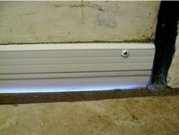
Weather Stripping in Good Condition
TIP: A great way to detect air leaks either around doors or windows is to hold your hand by the seams and see if you can feel any air (either cold or warm depending on the season) coming in from outside.
B2: Do any window frames, door frames, or wall joints have exposed areas or cracks?
Much like doors, other parts of the building will have seams where air can unintentionally escape or enter. It’s best to check areas where two things come together, like a window in a wall, or a door in a wall, or two walls of different materials, all of these should have some type of seam. You’ll want to look for any cracks or put your hand by the seams to see if you can feel any air coming in or out.
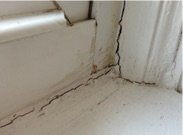
Window Frame Air Infiltration
WDWC?: It takes a lot of energy to heat or cool air. So the last thing we want is for that conditioned air to blow out of the building. When a crack is found, caulk can be used to create a tight seal and prevent air from exiting or entering.
B3: Are any windows single paned or in poor condition?
Single paned windows can be identified by only having one piece of glass. Double paned windows have two panes of glass with space between the panes usually filled with a gas.
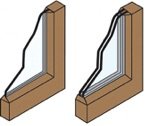
Single-Pane vs Double-Pane Window
WDWC? Glass isn’t the greatest insulator, meaning a lot of air can escape through windows. You can feel this in the winter when you touch a window and it’s really cold. Double-paned windows are more efficient because they create more insulation for the building than a single-paned window – better keeping the interior at the desired temperature.
H1: Is the thermostat programmable?
Programmable thermostats allow an occupant to program a schedule for the thermostat to automatically change the temperature based on the time of the day and day of the week. Manual thermostats typically can be identified by a dial or switch. Programmable thermostats generally have buttons and a digital display that shows the time, date and temperature set points.
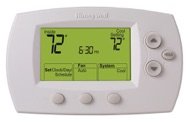
Programmable Thermostat

Examples of Non-Programmable Thermostats
WDWC?: Programmable thermostats allow a business owner to have the heating or cooling automatically setback when the business is closed, thus saving lots of energy. Although the same can be accomplished with a manual (non-programmable) thermostat, it would require someone to remember to set it back every night. Being humans, it can be easy to forget a night or two each week. A programmable thermostat runs the heating and cooling exactly as the owner wants it to run at all hours.
H2: Do all programmable thermostats have the correct day and time set?
If the business is using programmable thermostats, we need to make sure that the thermostat has the correct day and time. Incorrect day or time means that the thermostat is either running off schedule or has been overridden and this would result in inefficient heating and cooling.
H3: *Has it been longer than 3 months since the furnace filters have been replaced?
Air filters are used to remove any large particles or dust in the incoming air from entering the furnace. These particles can be harmful to the system and reduce the equipment’s lifespan, as well as make the system work harder and use more energy.
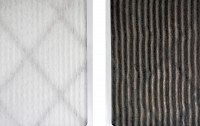
New Air Furnace Filter vs Dirty Air Furnace Filter
WDWC?: If these air filters are not replaced regularly, they can have large dust and dirt buildups which makes the system work even harder to pull in air, thus using extra energy to perform the same task. By replacing them on a regular basis, the furnace can operate more efficiently.
W1: Are there aerators on all sink faucets?
Faucet aerators infuse water exiting from the faucet with air in order to create a larger spray while using less water. Aerators are located where the water exits from the faucet. They can typically be identified by the presence of a screen or similar strainer like material.
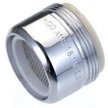
Faucet Aerator

Water Stream With Aerator vs Without Aerator
W3: Are all toilets low-flow units (1.6 gpf or less)?
Low flow toilets use less water per flush than older toilet models (gpf stands for gallons per flush). The flush rate (gpf) can usually be found on the top of the toilet for newer models. In order to be a low flow toilet, it must have a flush rate that is less than or equal to 1.6 gpf.

Toilet GPF Label
TIP: If you can’t find the manufacturer label of the flush rate somewhere on the toilet, chances are that it is not a low-flow toilet. Older models typically don’t have the label printed and are likely to not be low-flow if they are that old.
Now let’s take a look at what the report looks like after all the survey questions are completed.
